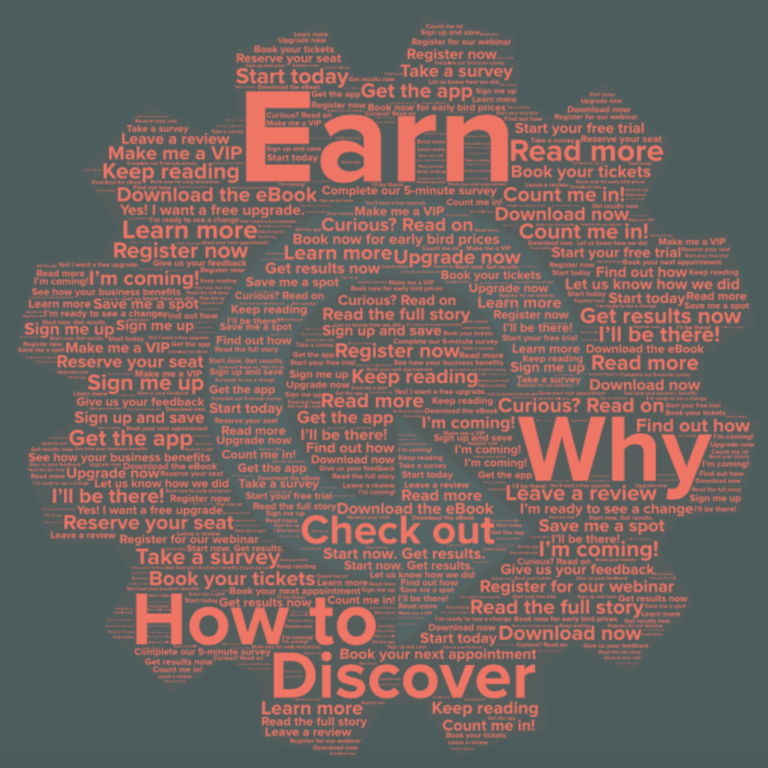You are viewing our site as a Broker, Switch Your View:
Agent | Broker Reset Filters to Default Back to ListAction Words That Generate Responses
February 08 2017

We've all been there, sitting at our desks, writing an email or a communication for work and wondering if we're potentially using words that could keep people from opening our email or could also positively influence them as they read it. There's a reason there's plenty of articles out there that tackle this exact conundrum of determining the best words for generating a response from your contacts.
Since its birth in 1991, the world wide web grows everyday. The internet, as of January 2017, has over 4.78 billion registered web pages and over 3.48 billion users. The email realm is even greater: by the end of 2017, it is estimated that there will be 4.9 billion email accounts with over 206 billion sent daily. The sheer size and scope of content available is daunting to any blogger or marketer trying to build, but there are methods on how to capitalize on the audience size the internet provides: call to action words.
Call-to-action words, CTAs, are not just verbs, but rather words that will provoke responses. CTAs can be placed in blog titles, email subjects, and advertisements links, and they increase the likelihood of grabbing attention from cold leads, or people who may not have heard of you, your website, company, or brand. MarketingExperiments, an Internet-based research lab that specializes in optimizing sales and marketing processes, has found that CTAs can increase clicks by upwards of 110 percent.
In the content world, language plays such a big role that it cannot be ignored; our customers must be convinced to respond. In the IoT – the internet of things – persuasion is the only way to appeal and gather popularity and recognition. In short, action words are the words that have more persuasive power than other vocabulary. After research and experimentation, we at Contactually found that these five action words and phrases are the most powerful in provoking responses and fostering genuine relationships in the wide world of Internet and email communications.
Action words that generate responses:
Check out
One of the most common yet most persuasive CTAs out there. It invites people in a suggestive and welcoming way, rather than an aggressive one that could spur people away. Modern phrases are more informal, and they are growing in popularity because they work so well with the growing younger generations. Typical words to replace with "check out" are command words, such as "watch now," "click here," and "read this." This CTA is a friendlier command, and surely it will get more people to check it out.
Discover
There is a reason why Discover is also the name of a credit card company. This CTA hints to expanding one's horizons. "Discover" insinuates a new opportunity to learn, grow, and prosper. This CTA particularly also places initiative on the reader to discover the content themselves rather than having it delivered to them directly. Common words to replace with this CTA are "learn," "catch up on," and "find."
Earn
"Earn" is a cultural trigger word here in the States. It is synonymous with Americans above everyone else because of the American Dream, which explains how a good life can be earned with hard work. Globally, "earn" equivocates to money; our society is achievement-oriented, so use that social psychology to your advantage. This CTA motivates the audience to achieve more on their own, the key to which is in the resource advertised. Words to replace can be "make," "generate," and "get."

Why
A method to provoking responses, clicks, and interactions is by poking the audience's inner Curious George. Humans are naturally curious creatures, so we naturally wonder answer to many unknown questions. "Why" is one of the most wide-ranged question words due to its explanatory nature. This CTA challenges principal meanings and encourages readers to dig deeper immediately. Answers can vary, allowing room for personal interpretations.
How to
This CTA refers to "hacks," strategies for managing one's time more efficiently. "How to" also helps simplify a dauntingly complex topic, such as computer coding. Touching once again on human curiosity, humans always are seeking out new ways to do various tasks, procedures, and habits. Whether a new habit or just another method, "how to" is a guaranteed way to capture people's interests.
Where do I apply these words?
While promoting a product, specific content, or simply announcing exciting news via a blog post or email, CTAs can attract audiences like moths to a flame. Especially in situations when a new audience needs to be established, CTAs make it that more likely for readers to engage and engage later again.
The most opportune places to use CTAs is in titles of web pages, email subject lines, and social media posts—these are the first text people read. For emails in particular, there is a higher click rate on links on the bottom and left side of emails than any other region, so the most potent place to use CTAs is there. Also we should note that CTAs need to be used sparingly. Overusing them is like overusing hot sauce—you can hurt yourself and your goal of a response.
To view the original article, visit the Contactually blog.









